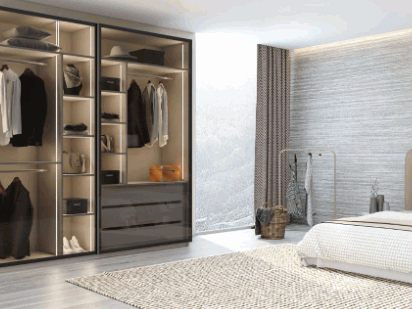Are you looking to redesign your bedroom and create a functional yet stylish wardrobe? Look no further, as this article will provide you with valuable tips and ideas for wardrobe design. With cluttered closets being a common concern, it’s important to optimize your wardrobe space to make getting dressed a stress-free experience. Let’s begin!
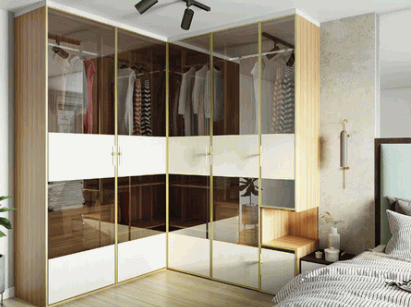
What Is A Wardrobe?
A wardrobe is a standing closet utilized for storing clothes, usually with rails, shelves, and drawers, and is an essential piece of bedroom furniture.
Explore: Bedroom Furniture Design
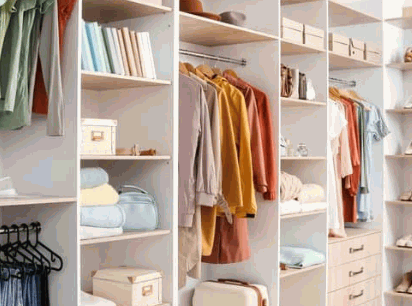
What Are The Factors To Consider Before Designing A Wardrobe?
Designing a wardrobe for your bedroom can be a daunting task, with many factors to consider. It’s not just about choosing the right style and color, but also taking into account practical aspects such as available space and storage needs. In this section, we will discuss the key factors that should be considered before designing a wardrobe. These include the available space in your bedroom, your storage needs, and your personal style and aesthetic preferences. By considering these factors, you can create a wardrobe that not only looks great but also meets your practical needs.
1. Available Space
- Measure the dimensions of the available space for the wardrobe.
- Consider the height, width, and depth to ensure the wardrobe fits perfectly.
- Account for any obstructions such as windows, doors, or radiators.
Pro-tip: If space is limited, opt for a built-in or sliding-door wardrobe to maximize utilization.
2. Storage Needs
- Assess the quantity and types of items that require storage.
- Consider the accessibility and organization of the storage space.
- Factor in the future storage needs and potential lifestyle changes.
3. Personal Style And Aesthetic
- Personal Style: Consider your fashion choices, color preferences, and overall aesthetic when designing your wardrobe.
- Space Assessment: Evaluate available area and lighting to match your personal style and aesthetic.
- Functional Design: Incorporate your unique aesthetic into the wardrobe structure, choosing between built-in, walk-in, or freestanding designs.
When considering your personal style and aesthetic for your wardrobe, it’s important to align the design with your fashion sense and preferred color scheme. Be sure to assess the available space and lighting to ensure it complements your personal style. Additionally, aim for a functional design that reflects your unique aesthetic, whether through built-in, walk-in, or freestanding options.
What Are The Different Types Of Wardrobe Designs?
When it comes to designing a bedroom, one of the most important elements is the wardrobe. Not only does it serve the practical purpose of storing clothes and accessories, but it also adds to the overall aesthetic of the room. There are various types of wardrobe designs available, each with its own unique features and benefits. In this section, we will discuss the different types of wardrobe designs, including built-in, walk-in, and freestanding wardrobes, and how they can enhance the functionality and style of any bedroom.
1. Built-In Wardrobes
Built-in wardrobes are an excellent solution for saving space. Here are the steps to consider when incorporating them:
- Assess the available space for the built-in wardrobe.
- Determine the storage needs and customize the internal layout accordingly.
- Align the design with your personal style and the room’s aesthetic.
Consider using sliding doors for your built-in wardrobes to save space and add a modern touch to the room.
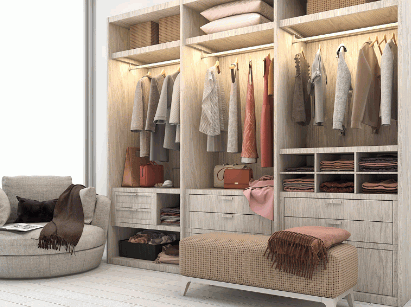
2. Walk-In Wardrobes
- Assess space: Measure the area to determine available dimensions for the walk-in wardrobes.
- Plan layout: Design the configuration of shelves, drawers, and hanging space to optimize storage in the wardrobes.
- Lighting: Install adequate lighting to ensure visibility within the walk-in wardrobes.
- Ventilation: Consider ventilation to prevent moisture buildup within the wardrobe space.
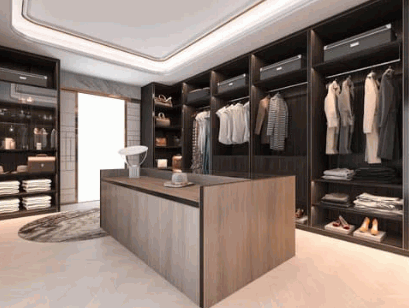
3. Freestanding Wardrobes
- Consider the available space to ensure the freestanding wardrobe fits without overcrowding the room.
- Evaluate your storage needs to determine the size and layout required.
- Reflect on your personal style and aesthetic to select a design that complements the room’s decor.
Pro-tip: Opt for freestanding wardrobes with adjustable shelves and drawers to accommodate changing storage needs.
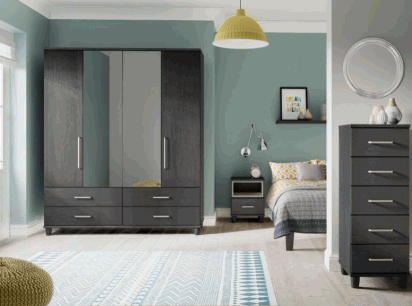
What Are The Materials Used For Wardrobe Design?
When it comes to designing a wardrobe for your bedroom, one of the most important factors to consider is the material used. The material not only affects the overall look and feel of the wardrobe but also its durability and functionality. In this section, we will delve into the different materials commonly used for wardrobe design and their unique properties. From the traditional and warm feel of wood to the sleek and modern look of metal, to the elegant and reflective qualities of glass, we will explore the pros and cons of each material option.
1. Wood
- Determine the type of wood: Choose between popular options like oak, pine, cherry, or walnut based on durability and aesthetics.
- Consider the construction: Opt for solid wood for sturdiness or engineered wood for cost-effectiveness.
- Finishing touches: Enhance the wardrobe’s appearance with varnish, paint, or natural wood finishes to complement your interior design.
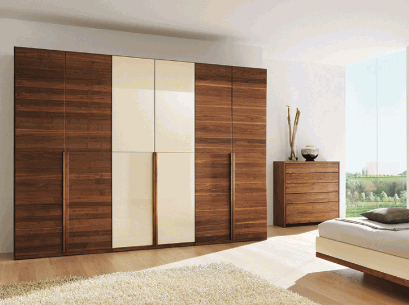
2. Metal
- Determine the purpose: Decide on the role metal will play in the wardrobe. For example, it can be used for the frame, handles, or decorative elements.
- Choose the right type: Select the most appropriate type of metal for the wardrobe’s function and aesthetic, whether it be stainless steel for a modern look or wrought iron for a more traditional feel.
- Maintenance considerations: Keep in mind the maintenance needs of the selected metal, ensuring they align with your lifestyle and upkeep preferences.
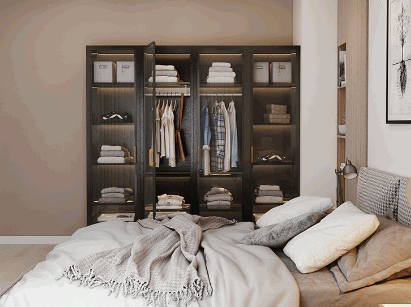
3. Glass
- Glass wardrobe doors offer a modern, sleek look to the room.
- Consider using frosted or tinted glass for added privacy and a contemporary touch.
- Be sure to regularly clean the glass surfaces to maintain their transparency and shine.
When incorporating glass into your wardrobe design, make sure it complements the overall aesthetic and effectively serves your storage needs.
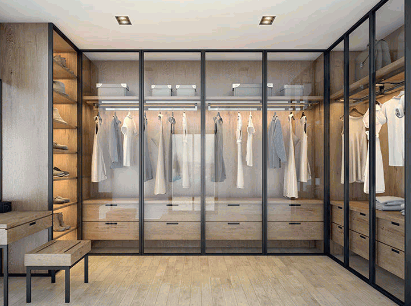
What Are The Essential Features Of A Functional Wardrobe Design?
A functional wardrobe design is essential for any bedroom, providing both storage and organization for our clothing and personal items. But what makes a wardrobe design truly functional? In this section, we will discuss the key features that every wardrobe should have in order to meet our storage and organization needs. From adequate storage space to customization options, we will explore the various aspects that contribute to a well-designed wardrobe.
1. Adequate Storage Space
- Assess your storage needs to determine the amount of space required.
- Utilize vertical space by incorporating tall shelves or hanging organizers.
- Maximize wardrobe depth for bulkier items like coats or dresses.
When designing for adequate storage space, consider the versatility of adjustable shelves and drawers to accommodate changing storage needs over time.
2. Proper Organization And Accessibility
- Declutter: Start by removing items that are no longer in use or suitable for the current season.
- Categorize: Separate your clothing items by type to make it easier to find specific pieces.
- Utilize storage solutions: Make use of shelves, drawers, and hangers to maximize space and ensure easy accessibility.
Pro-tip: Regularly assess your wardrobe to maintain a well-organized and easily accessible space.
3. Customization Options
Adjustable shelves and rods make it easy to customize storage to fit personal needs. With modular units, you can mix and match to create a storage solution that is just right for you. Choose from a variety of finishes, colors, and door styles to truly personalize your space.
What Are Some Creative Wardrobe Design Ideas?
Are you looking to upgrade your bedroom with a new wardrobe design? Look no further, as we explore some creative ideas to elevate your wardrobe game. From functional features to aesthetic elements, we will discuss four unique wardrobe design ideas that will add both style and efficiency to your bedroom. Get ready to be inspired by the possibilities of mirrored doors, sliding doors, open shelving, and hidden compartments in your wardrobe.
1. Mirrored Doors
- Enhances space: Mirrored doors create an illusion of a larger room.
- Reflects light: Adds brightness and a sense of openness to the room.
- Multipurpose: Offers a full-length mirror for dressing convenience.
Consider incorporating mirrored doors for an elegant and space-efficient wardrobe design. The reflective surface not only contributes to the illusion of more space but also provides functional benefits.
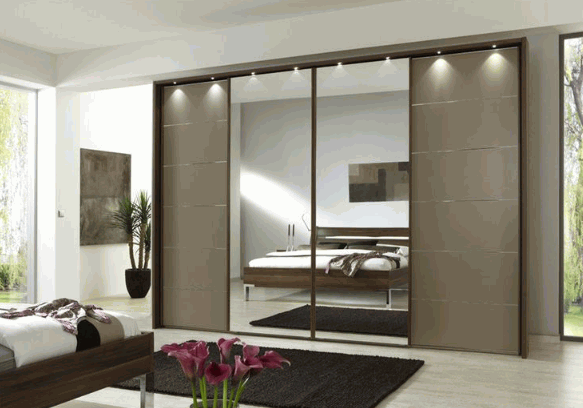
2. Sliding Doors
Sliding doors are a popular choice for wardrobes due to their space-saving design. They provide easy access to the entire wardrobe without requiring extra floor space for door swings. When considering wardrobe designs, sliding doors are the perfect option for small rooms or when maximizing space is a top priority.
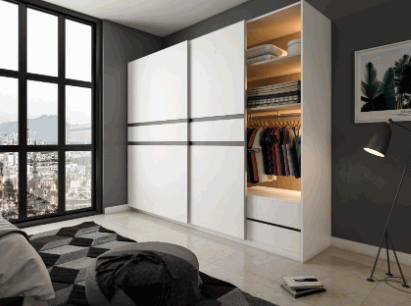
3. Open Shelving
- Maximize Space: Utilize open shelving to create an airy feel and visually expand the room.
- Display Items: Showcase frequently used or aesthetically pleasing items for easy access and as a design feature.
- Organize Effectively: Use baskets, boxes, or dividers to keep items neat and prevent clutter.
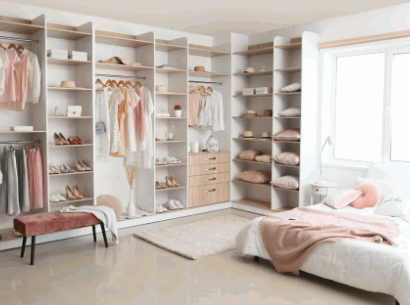
4. Hidden Compartments
- When designing your wardrobe, consider incorporating hidden compartments for easy access while maintaining a seamless aesthetic.
- Optimize space and organization by integrating hidden compartments for valuables or seasonal items.
- Ensure the concealed compartments blend harmoniously with the overall design, enhancing both functionality and style.
When it comes to hidden compartments in your wardrobe, prioritize practicality and elegance to elevate your storage solutions.
How To Maintain And Keep Your Wardrobe Organized?
- Regular Sorting: To maintain and keep your wardrobe organized, start by organizing clothes by type and season to prevent clutter.
- Utilize Storage Solutions: Maximize space and maintain order by utilizing hangers, dividers, and baskets.
- Donate or Discard: Regularly remove items that are no longer worn to prevent overcrowding and maintain a clutter-free wardrobe.
- Clean Regularly: Keep your wardrobe clean and fresh by dusting and vacuuming it regularly.
- Maintain Order: After using items, make sure to return them to their designated places to sustain the organization in your wardrobe.
